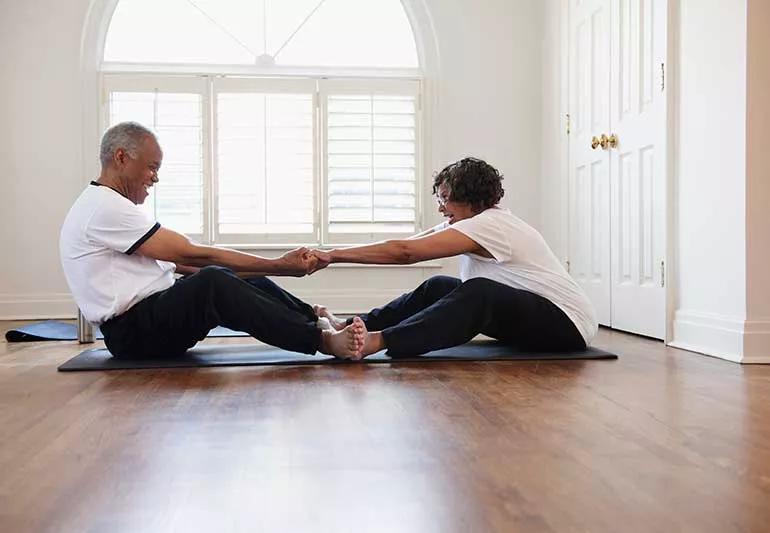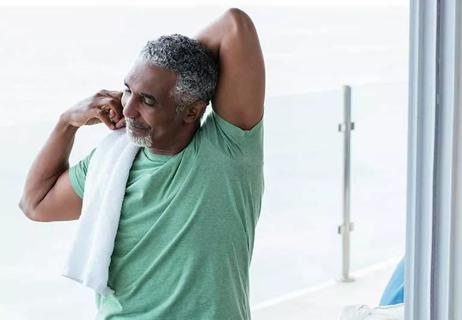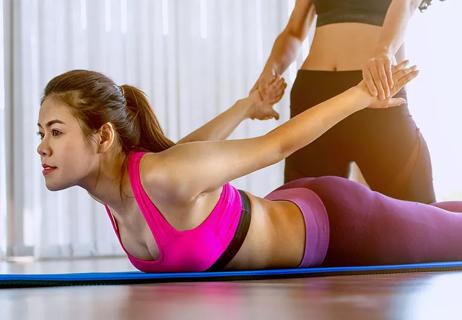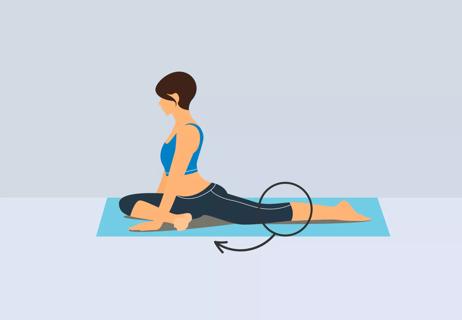Having a partner help you stretch can prevent injury and lead to an increased range of motion

It’s a familiar scene: You’re watching the big game and see the wide receiver or the point guard on the sidelines stretching out their hamstrings with help of a trainer.
Advertisement
Cleveland Clinic is a non-profit academic medical center. Advertising on our site helps support our mission. We do not endorse non-Cleveland Clinic products or services. Policy
This type of stretching is known as assisted stretching or partner-assisted stretching and can be beneficial when it comes to increasing your flexibility and range of motion.
So, whether you’re recovering from an injury or just want some relief from chronic back pain, is this something you should try?
Exercise specialist Ben Kuharik walks us through what assisted stretching is, its benefits and some basic moves to try.
Assisted stretching is a form of passive stretching, which uses an outside force to stretch your muscles. You can use a towel, fitness strap or in the case of assisted stretching, you can use a partner.
Assisted stretching is also known in the physical therapy space as proprioceptive neuromuscular facilitation or PNF stretching.
“With assisted stretching, you use a friend, trainer or teammate to apply an external force to help with your stretches,” explains Kuharik.
You may be familiar with dynamic stretching, which involves moving your joints and muscles repeatedly in the same motion before physical activity to help improve your power and coordination.
Or you may have heard of static active stretching, which is based on holding a stretch as far as you can go for a set length of time, typically 30 to 90 seconds. This type of stretch can improve your flexibility and improve balance.
Advertisement
“But with assistance stretching, you’re spending more time focusing on stretching out a specific area, which can lead to an increased range of motion,” says Kuharik.
All you need is a partner — whether that’s a family member, teammate or gym buddy — to help guide you through stretches. Practitioners and physical therapists are often trained on assisted stretching and can help you determine the best stretches for you and your goals.
“During an assisted stretch, you’re pushing the leg, arm or other body part of your partner into a lengthened position,” explains Kuharik. “That’s followed by flexing the lengthened muscle as hard as you can for five to 10 seconds.”
That action causes your muscle to become fatigued or tired.
“Then your muscle naturally relaxes,” Kuharik continues. “And that’s where the partner comes in and pushes your muscle a little bit further to a point your muscle normally wouldn’t get to in a non-fatigued state.”
The goal? To push your muscles a little more, which results in a deeper stretch and improved flexibility and range of motion.
“Over time, after doing an assisted stretch a few times, that expanded stretch will become your natural range of motion,” says Kuharik.
Is assisted stretching worth it? Yes, stretching can be great to help with aches and pains. Here are some benefits of assisted stretching:
Want to give assisted stretching a try? Here are a few basic assisted stretching moves:
This single-leg stretch helps loosen up tight hamstrings.
Advertisement
This is a good stretch for your quads, which can help prevent injury and increase flexibility.
Spend your days hunched over a computer or desk? This stretch can help relieve any tightness you have.
Does assisted stretching work? Whether you’re an athlete or just sit at your desk all day long, assisted stretching can help.
“If you want to gain flexibility, this is certainly the best type of stretching to increase your range of motion,” says Kuharik.
Advertisement
Learn more about our editorial process.
Advertisement

This satisfying, involuntary act of yawning and stretching helps release tight muscles

While one focuses on stretching through movement, the other requires holding poses for 30 to 90 seconds — both can have a place in your fitness routine

Stretch before and after your workouts for maximum benefits, but your pre-workout stretches should be different from your post-workout stretches

Simply contracting certain muscles provides a good stretch to other areas of your body

Relax into this form of stretching while a prop or partner assists you

Reduce pain and stiffness by stretching your body throughout the day

This extreme stretch can help build hip mobility and address pain in your back, knees and feet

Activities like swimming, cycling and rowing can get your heart pumping without stressing your joints

If you’re feeling short of breath, sleep can be tough — propping yourself up or sleeping on your side may help

If you fear the unknown or find yourself needing reassurance often, you may identify with this attachment style

If you’re looking to boost your gut health, it’s better to get fiber from whole foods